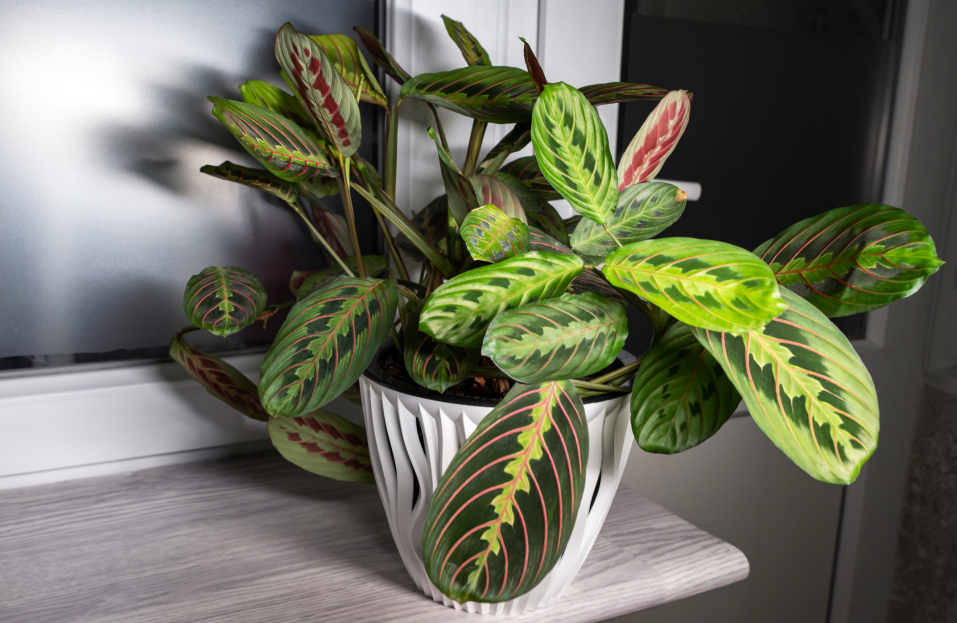
The Maranta, commonly known as the Prayer Plant, is a stunning tropical houseplant known for its vibrant, patterned foliage and unique movement. At night, its leaves fold upward like hands in prayer, giving the plant its name. With the right care, Maranta can thrive indoors and bring a lush, tropical feel to your home. Here’s everything you need to know to keep your Prayer Plant healthy and beautiful.
Maranta thrives in bright, indirect light. Too much direct sunlight can scorch its delicate leaves, while too little light may cause the plant to lose its striking colors. A spot near an east or north-facing window with filtered sunlight is ideal. If natural light is insufficient, a grow light can help maintain its vibrant appearance.
Prayer Plants prefer consistent moisture but dislike sitting in soggy soil. Water when the top inch of its soil feels dry, using filtered or distilled water to prevent leaf browning caused by chlorine or fluoride. Reduce watering slightly in winter when the plant’s growth slows down.
Being a tropical plant, Maranta requires high humidity (above 50%) to thrive. Dry air can cause leaf edges to brown. Increase humidity by misting your plant, placing it on a pebble tray with water, or using a humidifier. Keep the temperature between 65–80°F (18–27°C) and avoid drafts or sudden temperature changes.
A well-draining, nutrient-rich soil mix is best for Maranta. A blend of peat moss, perlite, and potting soil ensures good drainage while retaining the right amount of moisture. Repot every 1 to 2 years or when the plant becomes root-bound.
Feed your Prayer Plant with a balanced liquid fertilizer diluted to half strength every 4 to 6 weeks during the growing season (spring and summer). Avoid over-fertilizing, as it can cause leaf burn. Reduce feeding in fall and winter.
To keep your Maranta looking its best, trim any yellowing or damaged leaves with clean scissors. Regularly wipe the leaves with a damp cloth to remove dust and allow for better photosynthesis. If your plant becomes leggy, prune the stems to encourage bushier growth.
Maranta can be propagated easily through stem cuttings or division:
Yes! Unlike many houseplants, Maranta is non-toxic to pets and humans, making it a great choice for pet-friendly households.
With its mesmerizing foliage and graceful movement, the Prayer Plant is a rewarding houseplant that adds beauty and life to any indoor space. By providing proper light, moisture, and humidity, you’ll enjoy a lush and thriving Maranta for years to come.